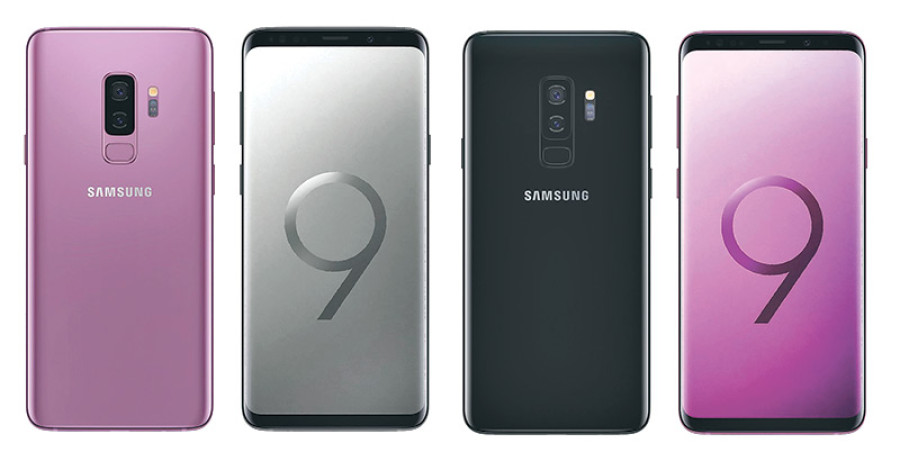Entertainment
Is S9 the best Android smartphone yet?
The Samsung Galaxy S9 and S9+ made their way in Nepal last week. This year’s flagships of the S-series, which has been ever so influential in leading the smartphone development,
Anuj Bhandari
The Samsung Galaxy S9 and S9+ made their way in Nepal last week. This year’s flagships of the S-series, which has been ever so influential in leading the smartphone development, have huge boots to fill as last year’s Galaxy S8 and S8+ were impressive and did quite well in terms of sales. With the Galaxy S9 and S9+ Samsung has made a few changes while taking a step into Augmented Reality. According to the company’s statements, the devices have a “camera reimagined” that can switch apertures in a way similar to the human eye. But how do they fare in real-life? Let’s find out in this review.
Camera and AR Emoji
Samsung has touted the Galaxy S9’s camera to be a revolutionary one that can adapt to the surroundings just like the human eye can. This is due to the adjustable aperture present in the S9’s single camera lens and in the S9 Plus’s dual camera lens. Yes, the smartphones feature a camera lens with a dual aperture whose size can be adjusted to your liking. The changeable aperture of f/2.4 helps to capture crisp and sharp images while the f/1.5 aperture can capture ample lighting to produce better pictures in a low-lit setting.
The pictures from the devices are exactly what you want them to be full of colours, well saturated with lots of details and of a wide dynamic range. While the S9 and S9+ do quite well in a dark environment, there is still a touch of noise in the images. But that doesn’t necessarily mean the pictures are bad, they are of high-quality, do better than the S8 and S8+, and consist of ample details.
The selfies the 8MP secondary camera of the S9 and S9+ are social media ready at all times, but the focus here is certainly the AR Emoji which can turn a user into an emoji. This feature is Samsung’s answer to Apple’s Animoji. AR Emoji certainly looks good on paper, but there is still a lot of work to be done. The device isn’t able to perfectly determine what a user is doing and if you ever happen to compare AR Emoji with Animoji, you will easily see how Animoji is the better option.
Display
All the pictures can be viewed on the device’s wide Infinity display. The Galaxy S9 has a 5.8-inch screen while the Galaxy S9+ has a 6.2-inch screen. The displays on both the devices are spread out thus providing more screen space. The S9 and S9+ have a Super AMOLED panel with a resolution of WQHD+. Samsung has always come up with the best displays on their smartphones and this year’s flagships are no different. The display is rich in terms of saturation and details and is brighter than last year’s S8 and S8+.

Design
The design is one of the best aspects of the Galaxy S9 and S9+ as Samsung has combined simplicity with a lustrous design. A device made entirely of Corning Gorilla Glass 5 on the front and rear, the devices have a metallic frame in between that holds the glasses together. Even though the devices look identical to the Galaxy S8 and S8+, the newer models do feel more premium and sleek. Samsung has done its homework in the design department by making their flagship smartphones’ design minimal which I really like. There is a huge slab of glass up front with an earpiece that doubles as a speaker, a camera and a handful of sensors on the bezel up top. Talking about the bezels, they are now even shorter and blend well with the display. While Apple and some other smartphone manufacturers have opted for a notch, Samsung has stayed traditional, and in this instance, I kind of like the company’s traditionalism. On the rear side sits a fingerprint scanner which has now been moved right underneath the camera setup of the devices for the user’s ease.
However, with the sleekness comes a certain fragility and a liability to slip off easily. So, I would advise anyone getting this smartphone to use it with a case at all times.
Performance
The Samsung Galaxy S9 and S9+ are available in two variants in terms of the chipset used. The devices available in the USA and China have the Qualcomm Snapdragon 845 SoC whereas the ones available in Nepal feature the Exynos 9810 SoC underneath the hood. The Galaxy S9 has 4 GB of RAM while the S9+ has 6 GB of RAM. The Exynos chipset in the devices now provide a 30 percent performance boost and that coupled with the ample amount of RAM makes it so that users will never feel any sort of sluggishness in terms of this phone.
If the scores from Antutu are to be believed, the S9 and S9+ are touted as the best smartphones in existence. Antutu gave the S9 a score of 214653 and a similarly high score to the Galaxy S9+. Geekbench scored the device 3660 on single-core and 8689 on multi-core. So, even while gaming, or doing some graphics intensive tasks on your smartphone, you can expect the Galaxy S9 and S9+ to deliver!
The devices did warm up a couple of times though, usually while running the benchmark tests. Other than that, the octa-core processor handles everything well. I think I won’t be wrong if I say that the Samsung Galaxy S9 and S9+ are the best performing smartphones on the market right now. Gone are the days when Samsung used to be slagged off for sluggish smartphones. This is also due the Experience UI running on top of Android v8.0 Oreo. The UI is light and snappy and comes loaded with extra features. However, I still think Samsung should go stock in terms of software if it wants its devices to be the smoothest of the bunch.
Security
Samsung has now combined facial recognition with its Iris Scanner to provide the users of with an extra layer of security. This security option is quite trustable as it checks both the face and irises to unlock the smartphone, but it just takes an extra second to read a user’s face. For someone who wants to unlock their device in an instant, the S9 and S9+ have a fingerprint on the back that adapts over time for an even faster unlock. Samsung has learned its lesson and placed the sensor in a comfortable area this time around.
Hardware
Firstly, let me talk about the speakers of the Samsung Galaxy S9 and S9+. The devices are now equipped with dual stereo speakers that are tuned by AKG. After years of wait, Samsung has finally made its smartphone’s speakers sound loud as the flagship’s volume can be amped enough to fill up a room. However, there were distortions in the sound at times when the volume was set to maximum.
While the Galaxy S9 and S9+ are available in three storage variants in the international market, Samsung will only launch the 64 GB version here in Nepal. The devices do support expandable memory, though, and that too for up to 400 GB.
Battery
In terms of battery, the Galaxy S9 houses a 3,000 mAh battery while the S9+ has a bigger 3,500 mAh battery. It is in the battery department where Samsung could have done better. The Galaxy S9+ provides a screen-on-time of around 4 and half hours to 5 hours with the S9 lasting for even less number of hours. Even though the chipset used on the devices is power efficient, the battery life is average at its best. You can, however, increase your battery life by a little bit by decreasing your device’s screen resolution.
Conclusion
The Samsung Galaxy S9 and S9+ have received a lot of hype and rightly so. With the industry’s leading hardware and software at the helm, the S9 and S9+ really deliver. If you can compromise on the battery front, I suggest you splash your cash on the device as it is the best Android smartphone available in Nepal right now.




 11.12°C Kathmandu
11.12°C Kathmandu










